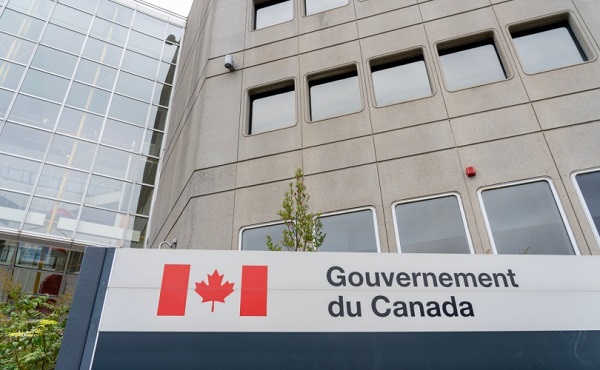conflict
Europe’s Heads of State Have Learned Nothing from 170 years of history
By John Leake
With the exception of Viktor Orban, Europe’s so-called leaders have a learning disability of miraculous proportions.
While the Congress of Vienna (1815) seemed to inaugurate a new era of hope for peace in Europe, Europe’s leaders couldn’t resist the siren song of bloodyminded pigheadedness that drew them into the Crimean War (1853-1856) in which Britain and France thought it more sensible to side with the Ottoman Turks than with Russia over various religious and territorial disputes in the Black Sea that are now too tedious to recount.
The only redemptive feature of the Crimean War—at least on the British side—is that members of the ruling class that wanted the war were willing to serve on the front line of it. Lieutenant-General James Thomas Brudenell, 7th Earl of Cardigan, was notorious for his aristocratic haughtiness and extravagance. He also achieved legendary status for leading the Charge of the Light Brigade during the Battle of Balaclava, immortalized in Tennyson’s poem.
Watching Cardigan charge directly into a Russian battery, the French commander, Pierre Bosquet remarked: “C’est magnifique, mais ce n’est pas la guerre: c’est de la folie (“It is magnificent, but it is not war: it is madness.”).
After the British and French backed the Ottomans against the Russians in the Crimean War, they backed the Russians against the Germans, Austrians, and Ottomans during the Great War of 1914-1918. When it came to drafting the Treaty of Versailles, the Allies were more interested in ascribing blame to the Germans than in making a lasting peace. This led to World War II, when British and the French backed the Russians once again against the Germans and the Austrians—this time with the Turks joining their side.
After World War II, the Americans thought it more important to create a lasting peace than to punish Germany again, so they chose the Marshall Plan instead of the punitive Morganthau Plan.
At the war’s conclusion, erstwhile allies U.S. and Russia, became mortal enemies in a Cold War in which they threatened each other with nuclear annihilation. At the conclusion of the Cold War, Washington decided to revert to the spirit of the Treaty of Versailles to kick Russia while it was down and to maintain a state of enmity with it instead of taking pains to incorporate it into the West.
In its great sagacity, the Trump administration has recognized that there is nothing to be gained for the American people by continuing the U.S. proxy war against Russia in Ukraine. Trump and his people recognize the reality that it would be far better to have a mutually respectful and beneficial relationship with Russia than to continue threatening it and maintaining a state of enmity with it.
Trump starkly contrasts with Europe’s so-called leaders, who wish to keep the Great Game pissing contest with Russia going. Like 15-year-old female rivals on a high school cheerleading squad, they find it more important to ascribe blame in the West’s longstanding conflict with Russia than to find a peaceful solution to it. All the phony expressions of solicitude for the people of Ukraine are pure humbug. Europe’s so-called leaders are perfectly happy to continue sending young Ukrainian men to their deaths and they will work hard to undermine Trump’s efforts to end the killing.
I would wager a large sum that not a single European head of state with the exception of Viktor Orban could—without referring to an Encyclopedia—provide an account of the various disputes, touchy matters of honor, and attributions of blame that were the casus belli of the Crimean War, the Franco-Prussian War, the First World War, or the Second World War. They are ignorant, childish brats who have learned nothing from European history.
I never thought I would say that President Trump must have the patience of a saint to suffer Europe’s irritating parcel of whiny, mercenary, and malevolent wimps.
Subscribe to FOCAL POINTS (Courageous Discourse).
For the full experience, upgrade your subscription.
Artificial Intelligence
AI Drone ‘Swarms’ Unleashed On Ukraine Battlefields, Marking New Era Of Warfare


From the Daily Caller News Foundation
Artificial intelligence-powered drones are making their first appearances on the battlefield in the Russia-Ukraine war as warfare creeps closer to full automation.
In bombardments on Russian targets in the past year, Ukrainian drones acting in concert were able to independently determine where to strike without human input.
It’s the first battlefield use of AI “swarm” technology in a real-world environment, a senior Ukrainian official and Swarmer, the company who makes the software, told the Wall Street Journal in a Tuesday report. While drones have increasingly defined modern battlefields, swarms until now had been confined to testing rather than combat.
“You set the target and the drones do the rest,” Swarmer Chief Executive Serhii Kupriienko told the WSJ. “They work together, they adapt.”
So far, the Swarmer technology has been used hundreds of times to target Russia assets, but was first used a year ago to lay mines on the front, the Ukrainian official told the WSJ. The software has been tested with up to 25 drones at once, but is usually utilized with only three.
Kupriienko told the WSJ that he was preparing to test up to 100 drones at once with the linking software.
A common arrangement used on the battlefield includes one reconnaissance drone to scout out the target and two explosive drones delivering the payload on target, the official told the WSJ.
While Western nations such as the U.S., France and the United Kingdom are also pursuing drone swarm technology, they have not deployed swarm technology on the battlefield the way Ukraine has, according to the WSJ. Currently, autonomous weapons are not regulated by any international authority or binding agreement, but ethical concerns around the technology has led many to call for increased regulation of weapons like the Swarmer system.
The Ukrainian Ministry of Foreign Affairs did not immediately respond to the Daily Caller News Foundation’s request for comment.
conflict
Trump Pentagon Reportedly Blocking Ukraine From Firing Western Missiles Deep Into Russia


From the Daily Caller News Foundation
The Department of Defense has spent months blocking the Ukrainian military from using American and British-made missiles to hit targets deep inside Russia, The Wall Street Journal reported Sunday, citing unnamed U.S. officials.
Undersecretary of Defense for Policy Eldridge Colby reportedly designed the procedure to review requests to carry out the long-range strikes with weapons that are either of U.S. origin or that require American intelligence or use components provided by the U.S., according to the WSJ. Secretary of Defense Pete Hegseth reportedly has the final say on whether Ukrainian forces can use the MGM-140 ATACMS (Army Tactical Missile System) to hit targets in Russia.
The reported blocks on missile strikes coincides with a Trump administration effort to broker a peace deal between Russia and Ukraine. A Pentagon spokesperson declined to comment further on the matter.
BREAKING: President Vladimir Putin reacts to B-2 Flyover pic.twitter.com/1mzVn7DxlW
— Jack Poso 🇺🇸 (@JackPosobiec) August 15, 2025
The Biden administration allowed Ukraine to carry out strikes with ATACMS in November, weeks after President Donald Trump won the 2024 election, the New York Times reported. Trump criticized the move during a December interview with Time magazine.
“It’s crazy what’s taking place. It’s crazy,” Trump said. “I disagree very vehemently with sending missiles hundreds of miles into Russia. Why are we doing that? We’re just escalating this war and making it worse. That should not have been allowed to be done.”
Trump and Russian President Vladimir Putin met in Alaska on Aug. 15 for a summit meeting during which Trump sought to secure a cease-fire in Russia’s war with Ukraine. As Trump greeted Putin, a B-2A Spirit stealth bomber and several fighters carried out a flyover of Elmendorf Air Force Base.
Trump met with Ukrainian President Volodymyr Zelensky and major European leaders on Aug. 18 to update them on the summit.
In July, Trump reached an agreement with NATO where members of the alliance would purchase weapons, including MIM-104 Patriot surface-to-air missiles, and donate them to Ukraine.
-

 Business2 days ago
Business2 days agoCarney Admits Deficit Will Top $61.9 Billion, Unveils New Housing Bureaucracy
-

 Alberta2 days ago
Alberta2 days agoAlberta first to add citizenship to licenses
-

 Alberta1 day ago
Alberta1 day agoBreak the Fences, Keep the Frontier
-

 Business15 hours ago
Business15 hours agoCarney’s ‘major projects’ list no cause for celebration
-

 Business16 hours ago
Business16 hours agoGlobal elites insisting on digital currency to phase out cash
-

 Business14 hours ago
Business14 hours agoRed tape is killing Canadian housing affordability
-

 Business2 days ago
Business2 days agoCarney’s Ethics Test: Opposition MP’s To Challenge Prime Minister’s Financial Ties to China
-

 Business2 days ago
Business2 days agoAttrition doesn’t go far enough, taxpayers need real cuts




